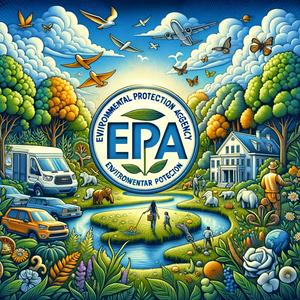EPA's Powering the Great American Comeback: Deregulation, Energy Boost, and Environmental Justice Concerns
This week, the Environmental Protection Agency, under Administrator Lee Zeldin, made waves with a significant shift in its enforcement priorities and regulatory focus. Dubbed the "Powering the Great American Comeback" initiative, the EPA has unveiled a deregulatory agenda aimed at boosting domestic energy production, reducing regulatory costs, and decentralizing environmental policy decisions.One of the most notable changes is the EPA's decision to deprioritize enforcement actions that could disrupt energy production. A new directive ensures that EPA interventions, such as inspections or penalties, will not lead to shutdowns of energy facilities unless there is an immediate threat to human health. In tandem, the agency plans to revise over 30 environmental rules affecting power plants, oil and gas facilities, and vehicle emissions—all of which will go through a lengthy public rulemaking process, likely taking years to finalize. Administrator Zeldin highlighted these changes as necessary to "revitalize the auto industry, lower the cost of living, and promote energy independence."However, the rollback of environmental justice considerations has drawn significant attention. The EPA has ceased prioritizing enforcement in historically overburdened communities and disabled tools like EJSCREEN, which previously identified vulnerable regions for intervention. Enforcement will now focus exclusively on pollutants posing direct health risks, with critics arguing this could exacerbate environmental inequalities.The impacts of these shifts are multifaceted. For American citizens, the reduced emphasis on environmental justice raises concerns about air and water quality in vulnerable areas. Businesses, especially in the energy sector, welcome the regulatory relief, seeing it as a chance to accelerate operations and cut compliance costs. State and local governments might face increased oversight responsibilities as federal enforcement withdraws. On the international stage, these deregulatory actions could strain relations with global partners committed to climate action.Data and timelines further illustrate the changes. By the end of 2025, the EPA aims to finalize key regulatory revisions, including the reconsideration of the 2009 Endangerment Finding, which classifies greenhouse gases as harmful to public health. Meanwhile, the public has until mid-April to comment on proposed modifications to methane emissions and other air quality standards.Looking ahead, stakeholders are watching how states and non-governmental organizations might step into the enforcement void. Citizens concerned about these shifts are encouraged to engage in public comment periods and monitor developments through EPA resources.In closing, the EPA's new direction sparks debates on balancing economic growth with environmental stewardship. Stay tuned for updates on rulemaking timelines and how communities adapt to these profound changes.

